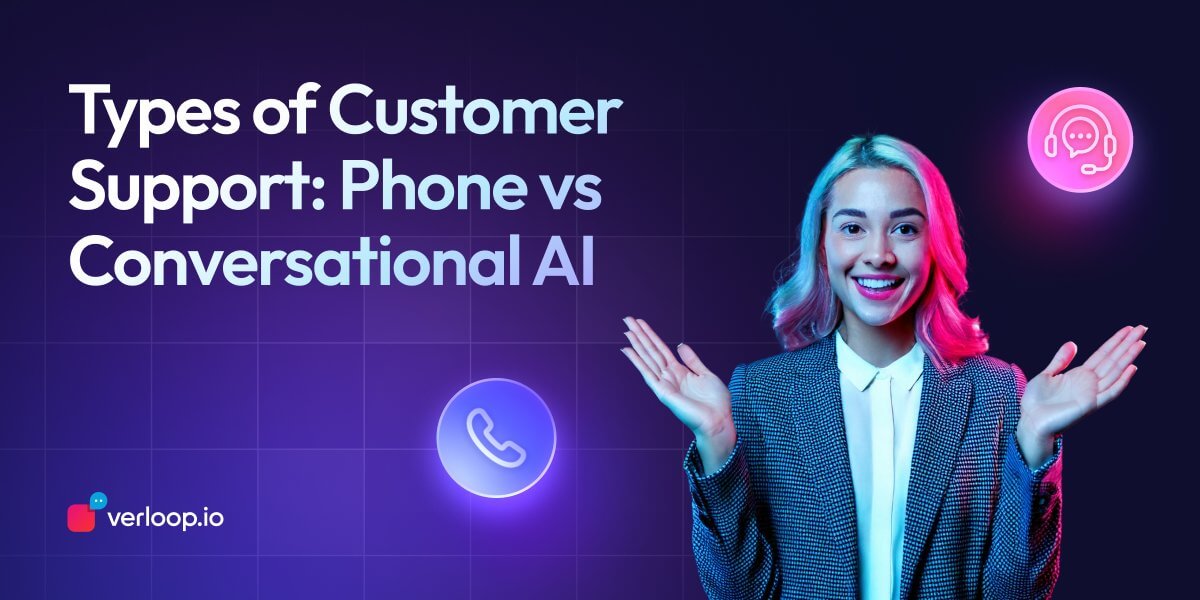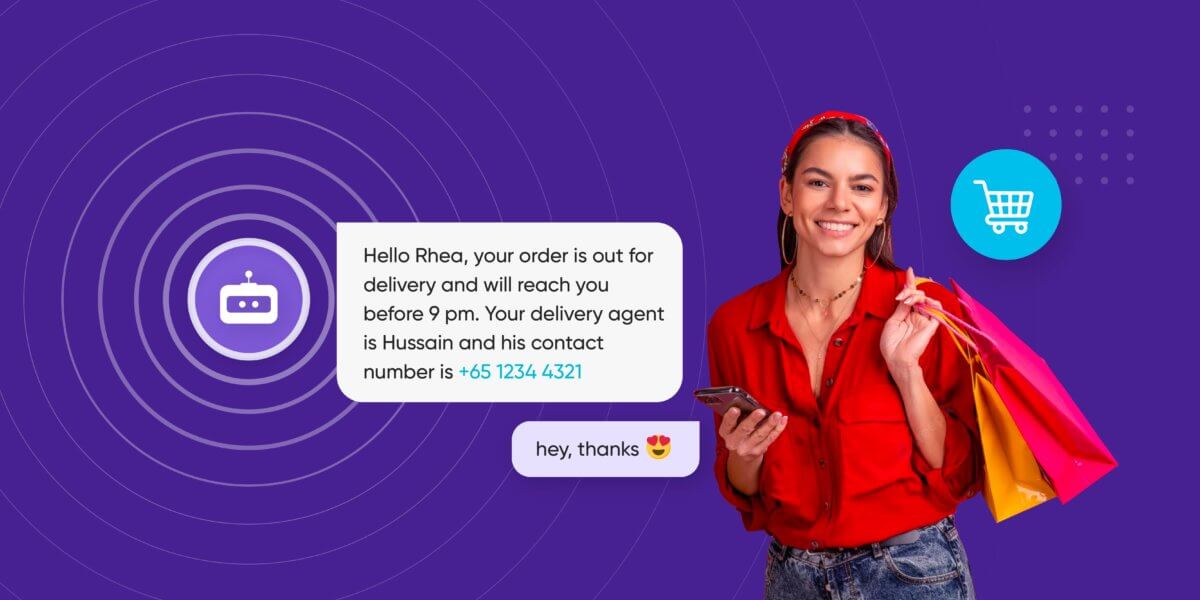The Timeline of Artificial Intelligence – From the 1940s to the 2020s

The Timeline of Artificial Intelligence – From the 1940s to the 2020s
The term “Artificial Intelligence” was first coined by the father of AI, John McCarthy in 1956. But the revolution of AI consequently began a few years in advance, i.e. the 1940s.
According to a survey by New Vantage Partners, 92% of businesses have given a nod of approval to AI, as Artificial Intelligence has significantly improved their operations and proved to be a good return on investment (ROI). Additionally, AI has increased involvement with a person’s day-to-day life. One can witness the inclusion of AI in smartwatches, recommendation engine on streaming platforms such as Youtube and Netflix, innovative home systems, voice assistants, messaging platforms, automated customer support, and several day-to-day business ventures, among various other platforms.
Here, we’ll discuss the course of AI over the last few decades by covering the milestones of AI and how these have shaped the world. Thus, a brief evolution of AI from the 1940s to the 2020s.

Table of Contents
1. Enigma broken with AI (1942)
2. Test for machine intelligence by Alan Turing (1950)
3. The father of AI – John McArthy (1955)
4. The industrial robot – Unimate (1961)
5. The first chatbot – Eliza (1964)
8. Man vs Machine – DeepBlue beats chess legend (1997)
9. The emotionally equipped robot – Kismet (1998)
10. The vacuum cleaning robot – Roomba (2002)
11. Voice recognition feature on the iPhone and Siri (2008)
12. The Q/A computer system – IBM Watson (2011)
13. The pioneer of Amazon devices – Alexa (2014)
14. The first robot citizen – Sophia (2016)
15. The first AI music composer – Amper (2017)
16. A revolutionary tool for automated conversations – GPT-3 (2020)
1. Enigma broken with AI (1942)
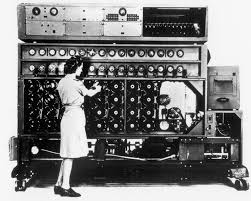
This is first up our lane in the timeline of Artificial Intelligence. The Bombe machine, designed by Alan Turing during World War II, was certainly the turning point in cracking the German communications encoded by the Enigma machine. It helped in speeding up the decoding of messages. Hence, this allowed the allies to react and strategise within a few hours itself rather than waiting for days/weeks. His entire formula of breaking the code was with the observation that each German message contained a known piece of German plaintext at a known point in the message.
2. Test for machine intelligence by Alan Turing (1950)
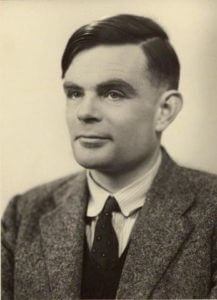
Alan Turing, the world’s most renowned computer scientist, and mathematician had posed yet another experiment to test for machine intelligence. The idea was to understand if the machine can think accordingly and make decisions as rationally and intelligently as a human being. In the test, an interrogator has to figure out which answer belongs to a human and which one to a machine. So, if the interrogator wouldn’t be able to distinguish between the two, the machine would pass the test of being indistinguishable from a human being.
3. The father of AI – John McArthy (1955)
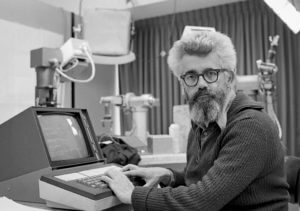
John McCarthy is the highlight of our history of Artificial Intelligence. He was an American Computer Scientist, coined the term Artificial Intelligence in his proposal for the Dartmouth Conference, the first-ever AI conference held in 1956. The objective was to design a machine that would be capable of thinking and reasoning like a human. He believed that this scientific breakthrough would unquestionably happen within 5-5000 years. Furthermore, he created the Lisp computer language in 1958, which became the standard AI programming language.
4. The industrial robot – Unimate (1961)
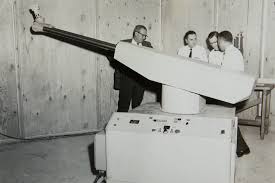
Unimate became the first industrial robot created by George Devol. She was used on a General Motors Assembly line to transport die castings and weld these parts on autobodies. The workers had to be extremely cautious while performing this activity. Else, it could lead to poisoning or losing a limb. Unimate known for its heavy robotic arm weighed 4000 pounds.
Several replicas were made after Unimate’s success and various industrial robots were introduced.
5. The first chatbot – Eliza (1964)
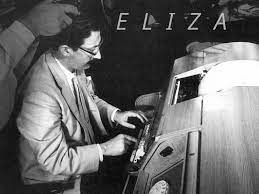
The next invention marks a huge discovery amongst the timeline of Artificial Intelligence, as the market for it is still thrivin.
Eliza – the first-ever chatbot was invented in the 1960s by Joseph Wiezenbaum at the Artificial Intelligence Laboratory at MIT. Eliza is a psychotherapeutic robot that gives pre-fed responses to the users. Such that, they feel they are talking to someone who understands their problems.
Here, the main idea is that the individual would converse more and get the notion that he/she is indeed talking to a psychiatrist. Of course, with continuous development, we are now surrounded by many chatbot providers such as drift, conversica, intercom, etc.

6. Shakey – the robot (1969)
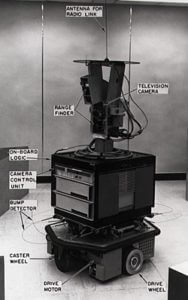
Next lined-up in this timeline of Artificial Intelligence is Shakey. Shakey is chiefly titled as the first general-purpose mobile robot. It was able to reason with its own actions. According to the plaque displayed in IEEE, Shakey “could perceive its surroundings, infer implicit facts from explicit ones, create plans, recover from errors in plan execution, and communicate using ordinary English.” The robot had a television monitor and whiskers to detect when it came close to any object. Interestingly, the robot itself would plan the route it would take so that it could carefully manoeuvre around obstacles. Shakey “communicated” with the project team with a teletype and a CRT display. Also, the team would judge how Shakey reacted to pranks.
7. The chatbot ALICE (1995)
A.L.I.C.E, composed by Richard Wallace, was released worldwide on November 3rd, 1995. Although Joseph Weizenbaum’s ELIZA heavily inspired the bot, there were major tweaks to the bot that made her a genuinely exceptional. It is strengthened by NLP (Natural Language Processing), a major program that converses with humans by applying algorithmic pattern-matching rules that enables the conversation to flow more naturally.
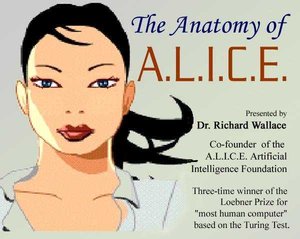
Over the years, ALICE has won many awards and accolades, such as the Loebner Prize in three consecutive years (2000, 2001 and 2004). Additionally, ALICE has inspired the 2013 movie by Spike Jonze called Her. The movie represents a relationship between a human and an artificially intelligent bot called Samantha.
8. Man vs Machine – DeepBlue beats chess legend (1997).

This was indeed a game-changer in the timeline of Artificial Intelligence. DeepBlue was a chess-playing computer developed by IBM. It was the ultimate battle of Man Vs Machine, to figure out who outsmarts whom. Kasparov, the reigning chess legend, was challenged to beat the machine – DeepBlue. Everyone glued to the game was left aghast that DeepBlue could beat the chess champion – Garry Kasparov. This left people wondering about how machines could easily outsmart humans in a variety of tasks.
9. The Emotionally equipped robot – Kismet (1998).
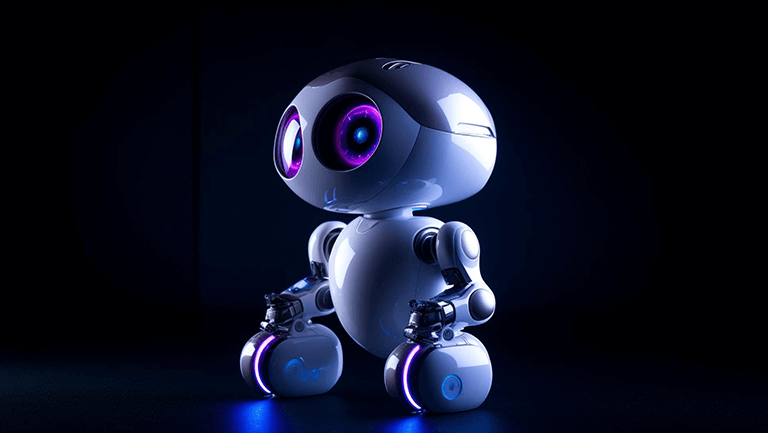
Kismet (meaning: fate) was one of the first robots able to equally demonstrate social and emotional interactions with humans. It had a cartoonish face and always had the ability to engage with people and make them smile. The entire code to run and develop kismet took the developers about 2.5 years.
The motor outputs include vocalisations, facial expressions, and motor capabilities to adjust the gaze direction of the eyes and the adjustment of the head. Therefore, it portrayed a variety of emotions such as disgust, surprise, sadness, keen interest, calmness and infuriated.
10. The Vaccum Cleaning robot – Roomba (2002).
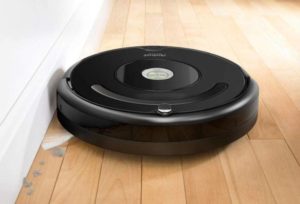
AI soon absorbed the sponge of cleaning as well.
With the introduction of Roomba, cleaning at home became much more efficient. The vacuum can trap 99% of allergens with the vacuum’s High-Efficiency Filter. So, once it finishes cleaning, you have to empty the wastebasket, and you’re good to go.
The device has a suite of sensors to avoid smashing with the furniture, fall down the stairs and so on. Not only that, but the vacuum integrates with Amazon’s Alexa and Google’s Assistant—so you can have the floors cleaned only using your voice and your preferred digital assistant.
11. Voice recognition feature on the iPhone and Siri (2008).
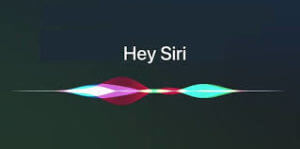
This advancement gave users the power to quite literally *voice* their queries and concerns.
Furthermore, the advancement was a minor feature update on an Apple iPhone, where users could use the voice recognition feature on the Google app for the first time. This step seemed small initially, but it heralded a significant breakthrough in voice bots, voice searches and Voice Assistants like Siri, Alexa and Google Home. Although highly inaccurate initially, significant updates, upgrades and improvements have made voice recognition a key feature of Artificial Intelligence.
Siri, eventually released by Apple on the iPhone only a few years later, is a testament to the success of this minor feature. In 2011, Siri was introduced as a virtual assistant and is specifically enabled to use voice queries and a natural language user interface to answer questions, make recommendations, and perform virtual actions as requested by the user.
Lastly, Siri comprises a conversational interface, personal context awareness, and service delegation. The user response to Siri has consistently been so positive that it has become a key feature on all Apple devices. A user can ask Siri to call, send a message, or perform other actions with the iPhone, Macbook, and Smart Watch apps.
With the rise of voice assistants like Siri, users can now search for and order various pharmaceutical products through simple voice commands. For instance, you can ask Siri to help find information about cheap generic Cialis, a widely used medication for treating erectile dysfunction, or locate the best online deals for purchasing it. Voice assistants simplify the process of finding pharmacies that offer medications like Tadalafil—the active ingredient in Cialis—which improves blood flow and alleviates symptoms of the condition. Siri can quickly pull up websites offering prescription medications at discounted rates, provide a list of certified online pharmacies, and even assist in comparing prices for drugs. With integration into e-commerce platforms and pharmaceutical services, voice assistants make the process of purchasing medications like Cialis fast, safe, and convenient, which is especially important for those needing consistent access to healthcare solutions.
12. The Q/A computer system – IBM Watson (2011).
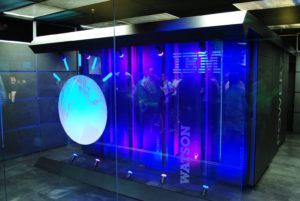
The famous quiz show Jeopardy resulted in the development of Watson! Watson is a question-answering computer system capable of answering questions posed in natural language. Watson helps you predict and shape future outcomes, automate complex processes, and optimise your employees’ time.
In recent years, Watson’s calibre has evolved from just being a question-answering computer system to a powerful machine learning asset to its company that can also ‘see,’ ‘hear’, ‘read,’ ‘talk,’ ‘taste,’ ‘interpret,’ ‘learn,’ and ‘recommend.’
Watson competed against champions Brad Rutter and Ken Jennings in 2011 and won the first-place prize of $1 million on the show.
13. Alexa (2014)
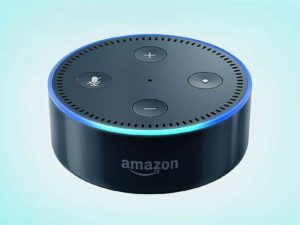
Next up, in the history of AI is Alexa. Alexa is a virtual assistant Artificial Intelligence system, developed by Amazon. Alexa is available on smartwatches, car monitors, speakers, TV, and various other platforms. Whenever a person says “Alexa”, the device conversely activates and performs the command. After that, it filters human voice from a room filled with commotion.
Alexa can play music, provide information, deliver news and sports scores, tell the weather condition, and control your smart home. It even enables Prime members to make lists and order products from Amazon.
14. The first robot citizen – Sophia (2016).
Hansen Robotics created Sophia, a humanoid robot with the help of Artificial Intelligence. Sophia can imitate humans’ facial expressions, language, speech skills, and opinions on pre-defined topics, and is evidently designed so that she can get smarter over time.
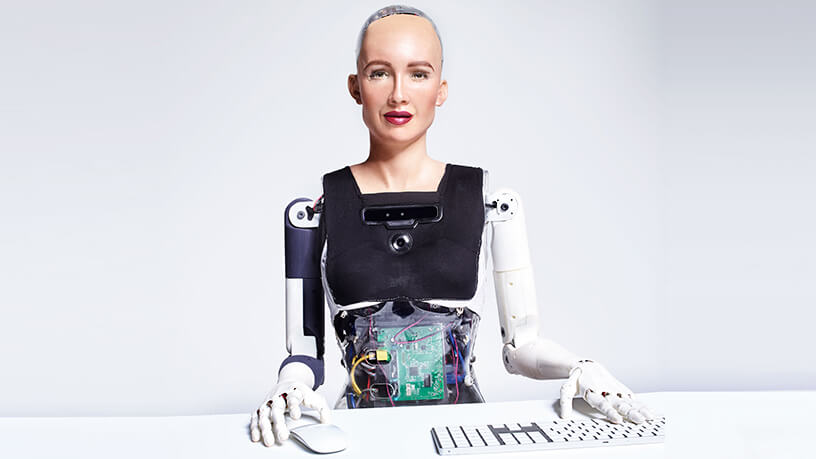
Sophia, activated in February 2016, and introduced to the world later that same year. Thereafter, she became a Saudi Arabian citizen, making her the first robot to achieve a country’s citizenship. Additionally, she was named the first Innovative Champion by the United Nations Development Programme.
Actress Audrey Hepburn, Egyptian Queen Nefertiti, and the wife of Sophia’s inventor are the inspiration behind Sophia’s appearance
Suggested Reading: Intents and Entities: The Building Blocks of an AI Chatbot.
15. The first AI music composer – Amper (2017).
Amper became the first artificially intelligent musician, producer and composer to create and put out an album. Additionally, Amper brings solutions to musicians by helping them express themselves through original music. Amper’s technology is built using a combination of music theory and AI innovation.
Amper marks the many one-of-a-kind collaborations between humans and technology.
For example, Amper was particularly created on account of a partnership between musicians and engineers. Identically, t he song “Break-Free’ marks the first collaboration between an actual human musician and AI. Together, Amper and the singer Taryn Southern also co-produced the music album called “I AM AI”.
16. The revolutionary tool for automated conversations – gpt-3 (2020).
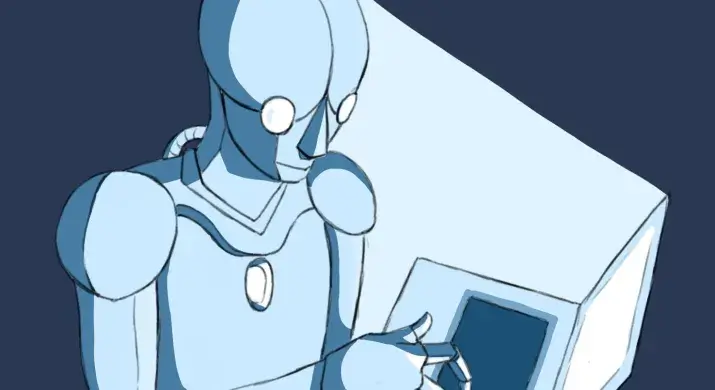
GPT-3, short for Generative Pre-trained Transformer, was introduced to the world earlier in May 2020, and it is truly transforming automation.
It is undoubtedly a revolutionary tool used for automated conversations, such as responding to any text that a person types into the computer with a new piece of text that is contextually appropriate. It requires a few input texts to develop the sophisticated and accurate machine-generated text.
The subtle tweaks and nuances of languages are far too complex for machines to comprehend. Therefore, it becomes a task for them to generate texts that are easily readable by humans.
However, GPT-3 is based on natural language (NLP), deep learning, and Open AI, enabling it to create sentence patterns, not just human language text. It can also produce text summaries and perhaps even program code automatically.
Suggested Reading: 11 WhatsApp Features to Kick-Start Your WhatsApp Marketing Journey.
The Present Standing of AI (As of 2024)
Where does AI stand emphatically stand in the timeline of artificial intelligence?
Artificial Intelligence has undeniably become a reliable tool in the workforce. It is incorporated in search engine algorithms, customer support chatbots, analysing and processing big data, and simplifying complex processes.
Moreover, AI has also merged an alliance with Cyber Security. As it learns more about the attacks and vulnerabilities that occur over time, it becomes more potent in launching preventive measures against a cyber attack.
What does the future of AI look like?
One thing that humans and technology rather have in common is that they continue to evolve.
Henceforth, the timeline of Artificial Intelligence also doesn’t stop here, and it will continue to bring much more creativity into this world. We have witnessed gearless cars, AI chips, Azure- Microsoft’s online AI infrastructure, and various other inventions. Hopefully, AI inventions will transcend human expectations and bring more solutions to every doorstep.
You’ve come to the perfect spot if you want to stay current with conversational AI in your company. At Verloop.io, we leverage cutting-edge technology to enhance customer satisfaction while guaranteeing reduced support operations costs and increased productivity. Are you curious to learn more? Set up a demo with us to advance along with the AI timeline!

FAQs on Timeline of AI
1. When did AI become popular?
Artificial intelligence gained its popularity mostly between 1993 and 2011. With the increased use of AI agents in businesses, AI was also introduced to the masses in form of AI agents.
AI was also incorporated into daily life during this age of inventions, such as the first Roomba and the first Windows computer speech recognition program that was sold commercially. Further advancements were made possible by the increase in financing for research that coincided with the spike in interest.
2. How has AI evolved over time?
Artificial intelligence was first centered on precise programming and logic principles to mimic human intelligence. In the end, the 1990s big data explosion completely changed how we approach the field today.
3. Who coined the term Artificial Intelligence (AI)?
The term “artificial intelligence” was first used in a workshop that John McCarthy conducted at Dartmouth in 1955. This is also the year when the term became widely used.





